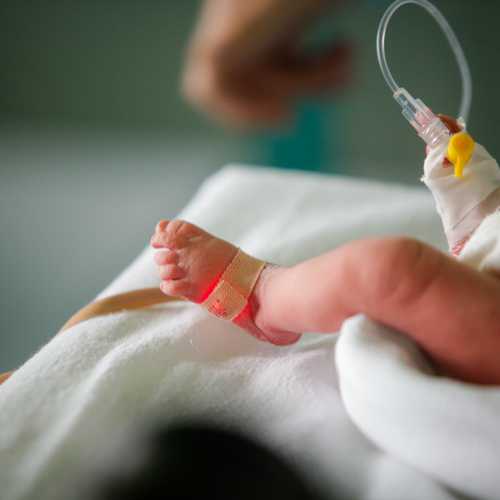Guideline
OB Guidelines Appendix E: Breech Version or External Cephalic Version
If your baby is in the breech (buttocks down) position late in your pregnancy, the following explains a procedure your doctor or midwife may try to turn the baby to a head down position.
About 4 out of 100 babies are in the breech position after 37 weeks. This increases some risks for the baby. Breech babies have a slightly higher than average chance of birth injury. The birthing person has a high chance of cesarean delivery. For these reasons, you and your doctor or midwife may try to turn your baby.
This procedure is carried out in the hospital. An ultrasound is used to see the baby’s position. This helps the doctor or midwife decide how to push on your belly. Your baby’s heartbeat is checked during the procedure. A drug may be given to help your uterine muscles relax (it may make your heart beat faster). Then, the doctor or midwife will push on the baby through your abdominal wall in an attempt to turn it.
After the procedure, your baby’s heartbeat is checked again.If you are Rh negative, then Rh immune globulin is usually given at this time.
About half the time, the baby can be turned into the head down position. Usually, once turned, the baby will stay head down. Sometimes, the baby turns back to breech.
If successful, turning your baby head down reduces the chance of a cesarean. But it is associated with a number of risks.
- During the turning, your baby’s heart rate may fall.This is not uncommon. The heart rate usually returns to normal quickly.
- The procedure may start your labor or cause your water to break. For this reason, the attempt to turn the baby is usually done within a few weeks of the due date. By then, the baby should be mature.
- In less than 1 out of 100 cases, the baby can be entangled in the umbilical cord during the turning.
- In less than 1 out of 200 of cases, the placenta may separate from the wall of the uterus. If this happens, the blood flow to the baby is reduced. That can be dangerous for the baby.
- If a problem does occur, an emergency cesarean delivery may be needed. Rarely, a problem will happen hours or days after the version.
- In very rare instances, the baby can die.
<< Appendix D | Web Guideline Home Page | Appendix F >>
More CRICO Guidelines or Algorithms
Neonatal Encephalopathy Guidelines


General Informed Consent Guidelines

Challenge: Take the OB Clinical Guidelines Test

